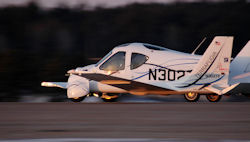Home  Reports
Reports  Materials
Sciences
Materials
Sciences  Content
Content
Copper wire shown to be competitive with fiber optic cable for LANS
 next article
next article

05.12.2003
Penn State engineers have developed and simulation tested a copper wire
transmission scheme for distributing a broadband signal over local area networks
(LANS) with a lower average bit error rate than fiber optic cable that is 10
times more expensive.
Dr. Mohsen Kavehrad, the W. L. Weiss professor of electrical engineering and
director of the Center for Information and Communications Technology Research
who led the study, says, "Using copper wire is much cheaper than fiber optic
cable and, often, the wire is already in place. Our approach can improve the
capability of existing local area networks and shows that copper is a competitor
for new installations in the niche LAN market."
Kavehrad presented the
Penn State teamís results in a paper, 10Gbps Transmission over Standard
Category-5, 5E, 6 Copper Cables, at the IEEE GLOBCOM Conference in San
Francisco, Calif., Thursday, Dec. 4. His co-authors are Dr. John F. Doherty,
associate professor of electrical engineering, Jun Ho Jeong, doctoral candidate
in electrical engineering, Arnab Roy, a masterís candidate in electrical
engineering, and Gaurav Malhotra, a masterís candidate in electrical
engineering.
The Penn State approach responds to the IEEE challenge to
specify a signaling scheme for a next generation broadband copper Ethernet
network capable of carrying broadband signals of 10 gigabits per second.
Currently, the IEEE standard carries one gigabit over 100 meters of category 5
copper wire which has four twisted pairs of wire in each cable.
"In the
existing copper gigabit systems, each pair of wires carries 250 megabits per
second. For a 10 gigabit system, each pair will have to carry 2.5 gigabits per
sec," Kavehrad explains. "At these higher speeds, some energy penetrates into
the other wires and produces crosstalk."
The Penn State scheme
eliminates crosstalk by using a new error correction method they developed that
jointly codes and decodes the signal and, in decoding, corrects the errors.
Kavehrad says, "Conventional wisdom says you should deal with the wire
pairs one pair at a time but we look at them jointly. We use the fact that we
know what signal is causing the crosstalk interference because it is the
strongest signal on one of the wires." The Penn State approach also takes
account of the reduction or loss of signal energy between one end of the cable
and the other that can become severe in 100 meter copper systems.
"We
jointly code and decode the signals in an iterative fashion and, at the same
time, we equalize the signals," adds the Penn State researcher. "The new error
correction approach acts like a vacuum cleaner where you first go over the rough
spots and then go back again to pick up more particles."
A MATLAB
simulation has shown that the scheme is possible and can achieve an average bit
error rate of 10 to the minus 12 bits per second. Fiber optic cable typically
achieves 10 to the minus nine. The work is continuing.
The project
receives support from Cisco, Tyco, Nexan and the International Copper
Association.
Barbara Hale | Source: EurekAlert!
Further information: www.psu.edu/
 next article
next article

More articles from ![]() Materials Sciences:
Materials Sciences:
![]() Researchers build new surface material that resists biofilm growth
Researchers build new surface material that resists biofilm growth
23.03.2009 | Syracuse University
![]() Vigilant windows
Vigilant windows
19.03.2009 | Fraunhofer Institute
for Applied Polymer Research IAP
B2B Search
Company / Organisation
Latest News
![]() Research
synthesis shines light on several management options after fires in diverse
ecosystems
Research
synthesis shines light on several management options after fires in diverse
ecosystems
23.03.2009 | Ecology, The Environment and Conservation
![]() Genetic
irregularities linked to higher risk of COPD among smokers
Genetic
irregularities linked to higher risk of COPD among smokers
23.03.2009 | Life Sciences
![]() Researchers
build new surface material that resists biofilm growth
Researchers
build new surface material that resists biofilm growth
23.03.2009 | Materials Sciences
Event News
![]() International
Conference on Magnesium very successful
International
Conference on Magnesium very successful
23.03.2009 | Event News
![]() Sustainability
Evaluation - a rising star!
Sustainability
Evaluation - a rising star!
16.03.2009 | Event News
![]() March
12 is World Glaucoma Day
March
12 is World Glaucoma Day
12.03.2009 | Event News







